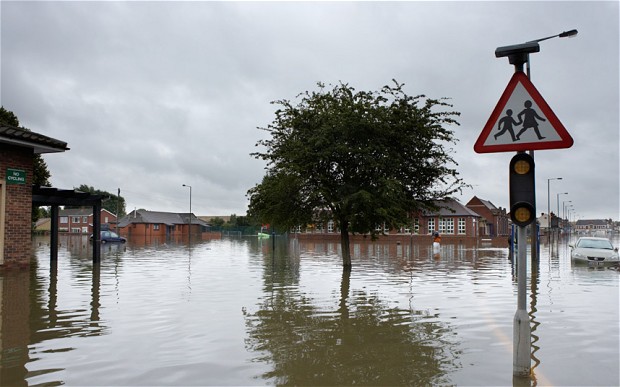With milder and wetter winters and hotter and drier summers forecast for the years ahead due to climate change, the demands on the UK’s water and waste infrastructure are going to only increase. This is especially acute in the capital where changing land use and the demand for more housing will see London grow in population and thus increase its water and sewerage use.
The dilemma
The irony is that, while there will be heavier demands on London’s drainage system, the capital will require more water supplies to meet the need. According to statistics contained within a report by the Mayor of London regarding the city’s future needs, consumption of water already outstrips supplies during drier weather.
There again, with heavier rainfall in recent years occurring in larger amounts in concentrated bursts and likely to be the case in the future, the drainage system has to cope with high volumes of water in shorter time frames. This is already the case in that most weeks, sewage is being discharged into the River Thames due to the inability of London’s drainage system to cope.
The drainage system, constructed in the mid-19th century, still works well but heavier demands as a result of more sudden, heavier rainfalls and the demands of an ever-growing population mean steps have to be taken as it clearly won’t be able to meet the needs of a city with a population of over 8 million and rising.
Flooding risks
London is already at risk from potential flooding as some 15 per cent of the city is in an official flood risk zone. The Thames Barrier was constructed to combat the threat of tidal flooding, but the risks will only increase with the prospect of larger amounts of rain falling at once. Compared to when they were first constructed, the current drainage has to cope with increased water run-off from hard surfaces due to more building work over the years as London expanded. As a result, land has been covered over that previously absorbed some of the surface water.
Steps being taken
The Mayor of London has published the London Plan, a report looking at London from all points of view including the economy, its people, transport and more. One section discusses the entire issue of climate change and how it will impact on the capital. Included in this is a section on drainage with proposals regarding managing waste and rainwater to alleviate the pressure on the current drainage system, and retaining as much water as possible to meet higher demand periods.
A range of techniques, collectively known as a sustainable urban drainage system (SUDS), are briefly discussed in the report to help meet those objectives:
- infiltration – the use of porous surfaces to absorb water.
- watercourse – where rainwater is directly discharged into a watercourse.
- sewer/drain – discharge rainwater direct to a surface water drain or sewer.
There is also a current major project upgrading and adding to the city’s current facilities:
Thames Tideway Tunnel and associated upgrades
Some work has been completed and more is underway on a huge multi-billion sewerage construction and upgrading project. The Thames Tideway Tunnel will be a 15 mile long tunnel running under the River Thames from west London to Stratford in the east.
It offers extra capacity to deal with the current overflow problems when heavy rainfall occurs. As mentioned earlier, this overflow is currently discharged into the Thames as sewage. The tunnel will collect the extra water and sewage instead of it entering the river and transport it to Stratford; from here it will be transferred to the greatly upgraded sewage treatment works in Beckton.
Along with Beckton, the capital’s other water treatment plants have been upgraded. These massive upgrades, with the Tideway Tunnel set to be completed in 2023, are expected to help the drainage system meet the capital’s needs well into the 22nd century.
Overflows overcome?
One brief look at the basic specification of London’s drainage system shows that, without the upgrades discussed and the use of other water dispersal techniques, they wouldn’t stand much chance of coping with the capital’s future requirements of which the implications of climate change are a major factor.
When first constructed, the drainage system’s designer Sir Joseph Bazalgette based usage demands on a population of 4 million. This in itself took into account expansion as the city’s population at that time was 2 million. Now, with a population over twice this and slated to rise, his creation under the streets of London clearly need massive help. The huge Tideway Tunnel project and other measures discussed in the London Plan report hopefully provide it.
Fraser Ruthven is the Marketing Associate for London’s leading drainage company- London Drainage Facilities. Fraser feels that people irresponsibly disposing of fats and oils is because an enormous issue that needs to be addressed as soon as possible.




